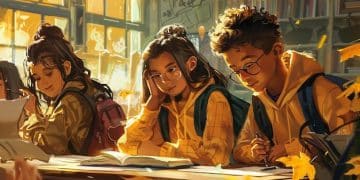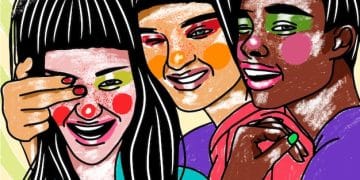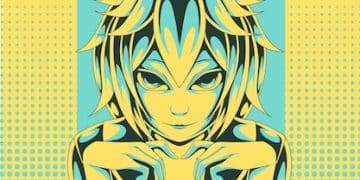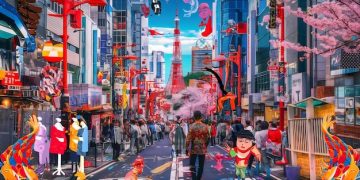Beyond the Battles: Socio-Political Commentary in Seinen Manga
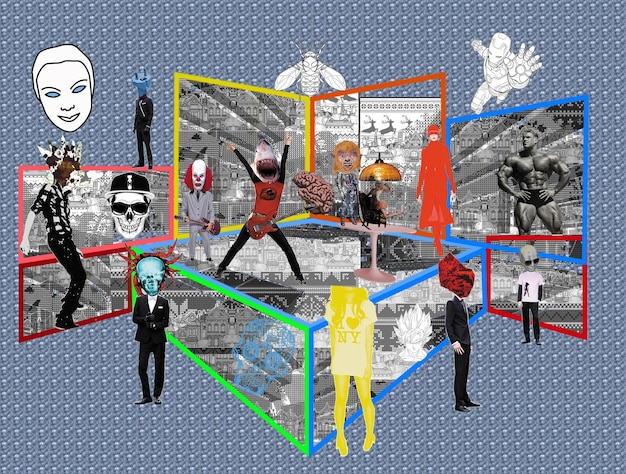
Beyond the Battles: Analyzing the Socio-Political Commentary in delves into how seinen manga uses narratives beyond simple combat to explore complex societal structures, power dynamics, and political ideologies, offering a critical lens on real-world issues.
Seinen manga, often recognized for its mature themes and complex characters, extends far beyond mere action sequences. Beyond the Battles: Analyzing the Socio-Political Commentary in this genre reveals how creators use narratives to dissect and comment on societal structures, power dynamics, and political ideologies, providing readers with thought-provoking insights.
Understanding Socio-Political Commentary in Seinen Manga
Seinen manga is uniquely positioned to tackle intricate socio-political issues. Unlike shonen manga, which often focuses on simpler themes, seinen is geared towards an older audience, allowing for more nuanced and critical explorations of complex topics. This section explores how these stories reflect real-world concerns.
The Role of Allegory in Seinen Manga
Many popular series use allegorical storytelling to represent real-world political scenarios. By creating fictional worlds, mangaka can explore sensitive topics without directly referencing specific political figures or events.
- Symbolic Representation: Characters and factions often symbolize real-world entities, allowing for commentary on broad political trends.
- Distanced Critique: By setting stories in fantastical or futuristic settings, creators can critique contemporary issues with a degree of separation.
- Exploration of Consequences: Allegories allow exploration of potential consequences of political actions without direct real-world implications.
Direct Socio-Political Themes
Some manga series choose a more direct approach, explicitly addressing societal problems like corruption, social inequality, and abuse of power, holding a mirror to society and prompting thoughtful reflection.
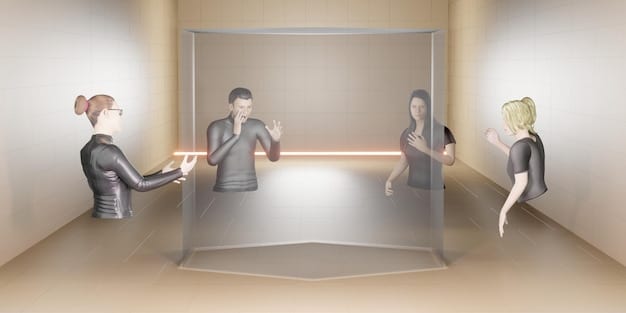
Ultimately, understanding the socio-political commentary in seinen manga requires examining both the overt and covert narratives at play. These stories act as both entertainment and social critique, inviting readers to ponder the complexities of the world.
Power Dynamics and Authority Critique
A recurring theme in many seinen manga is the examination of power dynamics and the critique of authority, demonstrating how systems become corrupt or unjust.
The Corrupting Influence of Power
Seinen often depicts how power can corrupt individuals and institutions. This theme is explored through characters who start with noble intentions but gradually succumb to the temptations of authority.
- Erosion of Morality: Characters in positions of power often compromise their values in pursuit of control or maintaining their status.
- Abuse of Authority: Manga series frequently showcase characters who exploit their power for personal gain, disregarding the rights and welfare of others.
- Systemic Corruption: Many stories critique entire systems that enable or perpetuate corruption, highlighting how deeply ingrained these problems can become.
Challenging Authority
Another potent theme is the challenge to established authority. Protagonists often find themselves questioning and opposing unjust systems, leading to dramatic confrontations and social change.
By showcasing these themes, seinen manga encourages readers to critically evaluate the systems around them. The narrative tension pushes audiences to consider the responsibilities of power and the importance of remaining vigilant against abuses.
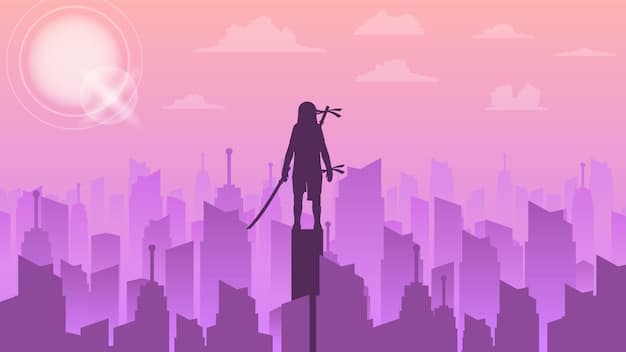
Social Inequality and Class Conflict
Social inequality and class conflict are regularly portrayed in seinen manga, offering complex narratives and challenging perspectives on societal hierarchies.
Depiction of Social Stratification
Seinen manga often illustrates the stark realities of social stratification, showing the struggles and disparities faced by different social classes.
Stories explore how economic disparities affect characters’ lives, limiting their opportunities and perpetuating cycles of poverty.
Class Warfare
Class conflict is frequently depicted as a fight for survival and justice. Characters from marginalized communities often rise to challenge the established order, seeking to redistribute resources and power.
This struggle can manifest as violent revolution, political activism, or subtle acts of resistance, presenting a multi-faceted view of social change.
Through these narratives, seinen manga brings attention to the urgent need for social justice and equality.
Psychological Impact of Political Turmoil
The psychological impact of political turmoil on characters is a central theme in many series, showing how individuals cope with oppressive systems and violent conflicts.
Dealing with Oppression
The effects of living under authoritarian regimes are often explored through characters experiencing constant surveillance, limited freedoms, and the fear of reprisal.
Manga series dive into the psychological toll of such environments, exploring coping mechanisms, resistance strategies, and the fight to maintain one’s identity.
Trauma and PTSD
Many characters suffer from trauma and PTSD as a result of witnessing or participating in violence. Seinen manga handles these issues with sensitivity.
These stories highlight the long-term effects of combat and political violence, emphasizing the importance of mental health support and recovery.
By focusing on these psychological impacts, seinen manga humanizes the victims of political conflict, emphasizing the need for empathy and understanding.
Ethical Dilemmas and Moral Ambiguity
Seinen manga often presents characters with complex ethical dilemmas and navigates realms of moral ambiguity, blurring the lines between right and wrong.
Gray Morality
Protagonists are frequently faced with situations where there are no easy or clear-cut solutions, forcing them to make tough choices with far-reaching consequences.
These characters are often portrayed with flaws and imperfections, making them relatable and human, even when their actions are questionable.
The Cost of Ideals
Striving for justice is a frequent theme, showing how ideals can be compromised in the face of harsh realities. Characters often find themselves sacrificing their values in order to achieve a greater good, leading to inner conflict.
This exploration prompts readers to consider the trade-offs involved in political action and the potential dangers of ideological purity.
Exploration of ethical dilemmas and moral ambiguity compels readers to constantly reassess their own beliefs and values.
Use of Foreshadowing and Symbolism
Foreshadowing and symbolism are used effectively to enrich the narratives and deepening the socio-political commentary.
Subtle Hints
Foreshadowing is used to create suspense and hint at future events, often in an understated way, drawing the audience deeper into the plot.
- Recurring Motifs: Repeated images or phrases can foreshadow significant plot developments or character transformations.
- Dream Sequences: Dreams are frequently used to symbolize inner turmoil or provide glimpses into the character’s past.
- Ominous Dialogue: Casual conversations can contain subtle hints that foreshadow major conflicts or betrayals.
Symbolic Representations
Symbolism adds layers of meaning, with objects, characters, and settings representing broader concepts or political ideologies.
The effective use of foreshadowing and symbolism enhances the depth and complexity of socio-political commentary, rewarding attentive readers with a richer and more nuanced experience.
| Key Point | Brief Description |
|---|---|
| ⚖️ Power Dynamics | Exploration of how power corrupts and influences societal structures. |
| 🌍 Social Inequality | Portrayals of class conflict and the effects of economic disparities. |
| 🧠 Psychological Impact | The psychological effects of political turmoil on individuals. |
| ⚔️ Ethical Dilemmas | Characters facing morally ambiguous choices with lasting consequences. |
Frequently Asked Questions
▼
Socio-political commentary in seinen manga involves using narratives to critique power structures, societal norms, and political ideologies, often exploring complex ethical dilemmas.
▼
Seinen manga, targeted at an older demographic, typically delves into more nuanced and mature socio-political themes compared to the younger-audience-focused shonen genre.
▼
Common themes include critique of authority, examination of social inequality, psychological impacts of political conflict, and ethical dilemmas faced by characters in power.
▼
Mangaka employ symbolism by imbuing characters, settings, and objects with deeper meanings, often representing broader concepts like corruption, resistance, or societal decay.
▼
Exploring these themes enriches the narrative, prompts critical thinking about real-world issues, and encourages empathy towards diverse perspectives and experiences.
Conclusion
Analyzing socio-political commentary in seinen manga provides profound insights into complex societal issues. Through intricate narratives, symbolic representations, and morally ambiguous characters, these manga series challenge readers to critically examine the world around them and reflect on the complexities of power, justice, and ethical responsibility.
